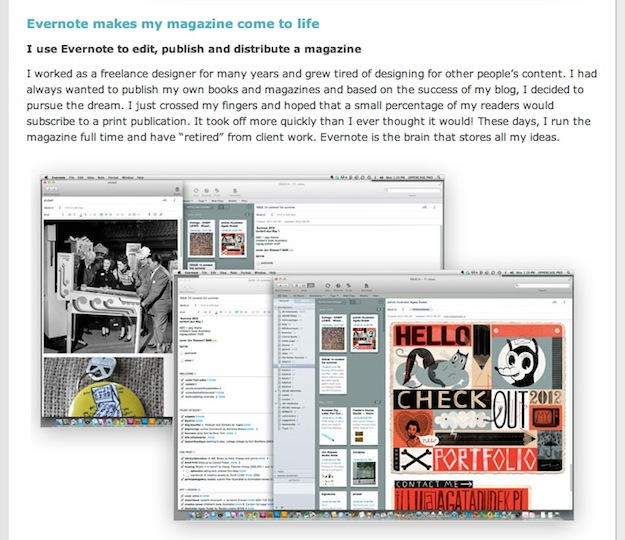Writer’s Block Be Gone! 9 Sources to Mine for Endless Blogging Ideas
July 2012
By Jason Ferster

“Content is king!” is the chief mantra of today’s marketing. And in the king’s service, many a business has begun blogging with fervor, only to have those efforts languish a few weeks or months later as the novelty wears off before the long-term benefits kick in.
The challenge facing any business blogger is not only to produce top-quality content that people will love and share but also to establish a regular rhythm of publishing new content over time in order to build a following and develop a community around the brand.
Perhaps you’re a sole proprietor – and therefore a solo blogger – juggling too many responsibilities and too little time. Or maybe you’ve been handed the torch of managing your company’s blog, and you have no clue where to begin. Perhaps you’ve been blogging for your company for some time now and are starting to feel the well of inspiration running dry.
Wherever you currently stand on the blogging spectrum, don’t give up. Great content ideas are all around you; you just have to know where to look to find them.
Here are nine reliable sources you can always turn to whenever you need inspiration for that next great post:
1. Your company documents
In the course of doing business, your company cranks out tons of documents. While many of these might seem boring or commonplace, there are seeds of inspiration to be found if you look hard enough.
Has someone from your company recently given a presentation at a conference or hosted a webinar? Find a way to mold the content into article form, and embed a video or audio recording (if available) for those who’d prefer to watch or listen rather than read.
Has your company published an ebook or whitepaper? You’re in luck! Take that content and break it down into bite-sized snippets for near-ready-made posts.
Even the most mundane documents can yield surprising gems. Your company’s annual report, for example, probably highlights the past year’s major accomplishments. Seek out the individuals responsible and interview them about the process of reaching those milestones. Ask them to share lessons learned along the way and advice that would be helpful to others (without giving away any trade secrets, of course). Transcribe your sessions and – just like that – you can check another blog post off your list.
2. Your coworkers
Every person within your organization brings a unique set of skills, experience, interests and expertise to the table.
Tap into that brain trust to keep your blog humming with an interesting and diverse array of content.
Recruit your coworkers to write posts inspired by their own particular strengths and areas of expertise. Different minds think differently, so you’ll likely discover that they’ll explore ideas that might never have occurred to you.
Plus – as a bonus – having many voices and perspectives represented on your company’s blog will only make it that much more useful and appealing to readers.
3. Your customers
If you’re doing your job right, your customers are your blog’s readers. But they can also be an invaluable source of its content as well. After all, who’s better qualified to share creative and practical ideas for how your products or services can be used to make someone’s life (or business) better, easier, richer or more efficient?
For example, Evernote regularly features customer interviews on its
corporate blog as a way to tout the limitless possibilities its suite of apps offers for personal organization and productivity.

Within each post, Evernote includes screen shots from the featured customer to demonstrate the software in action.

The firm has even taken this approach one giant leap further, recruiting their best customers as brand ambassadors in areas relative to their particular expertise. For example, they’ve instituted a food blogger as their Home Cooking Ambassador, a workout guru as their Fitness Ambassador and a personal tech expert as their Parenting Ambassador.
4. Studies, surveys and polls
If there’s one thing we’ll never be lacking in today’s information age, it’s data. Every day, new research is being published on any number of topics.
Find a recent study that’s relevant to your audience and digest what the results mean for them in practical terms.
Do the numbers indicate a shift in trends? If so, how should your readers adapt their approach to stay ahead of the curve?
Does the research suggest that the status quo is here to stay? If so, how can your readers respond to make the most of a proven winner?
5. News headlines and pop culture trends
A sure way to spice up any blog post is to find a tie-in to current news headlines and pop culture trends.
The trick is to take two seemingly unrelated concepts –
such as comedian Louis C.K. and customer service – and create an analogy that brings them together in a way that offers a fresh perspective on a topic that’s been covered countless times before.
Whether it’s The Amazing Spider-Man or the Olympics, Tom Cruise or the presidential election, by linking subject matter that may seem either unfamiliar or unoriginal to something very familiar and timely, suddenly your topic – no matter what it is – becomes much more relatable and of the moment to your reader.
6. The calendar
Life – and business even more so – is cyclical. With every year comes tax season, summer vacation, the holiday rush and the lull that follows, a new year and new budgets...you get the idea.
Think critically about what types of challenges each season brings for your readers, and write timely posts centered around useful tips and advice to help them through.
7. Your own blog
Just because you’ve written about a certain topic before doesn’t mean it’s off the table now. There’s always more to say or a different angle to explore.
Perhaps the original was an entry-level, 101-style post. Now it’s time to delve deeper to help those readers who’ve mastered the basics and are ready to learn more.
Perhaps enough time has passed since the previous post that new research has been released on the topic, or industry trends have shifted in a different direction. Revisit the topic and bring your readers up to speed on the latest developments.
8. Other blogs
You never have enough time in the day. Guess what? Neither do your readers.
Sometimes the best way to solve both of these problems is not to create new content but to curate the great content that already exists.
What does that mean?
It means aggregating the best, most useful posts that you’ve found in your travels across the Web into a single post (giving due credit to the original sources, of course).
This type of article can be organized either around a central theme (e.g. “Pinterest: 10 Articles to Help You Get Started”) or by timeframe (e.g., a “Week in Review” round-up of your favorite articles from the past seven days).
Either way, you’ve done your readers a great service by sparing them the time to cull through all the riffraff to get to the good stuff, and you’ve published another great post that required minimal time and effort to compose.
9. You
We began with one mantra, so let’s finish with another: “Write what you know.” The best source of blogging inspiration will always be your own life experience. Readers engage more with true-to-life stories of obstacles overcome or goals achieved.
Generally, if something triggers an emotional response from you – whether it’s excitement, anxiety, frustration or curiosity – you’re likely not the only one who’s encountered this situation or felt this way, which means it’s worth considering how to spin the event into a relevant article for your company’s blog.
Also, you can harness personal challenges to put yourself in the shoes of your readers. For example, this article was inspired by my own strategizing process for a new company blog – how would
I keep the content flowing when the obvious ran out?
Keep in mind, too, that there are certain basic building blocks of life and of business that are universal. Every person who owns a business, for example, has to figure out how to win new customers, what they can do to grow their market share, the best way to manage employees and company resources, etc. If your target readers are business owners and entrepreneurs, any wisdom you have to offer in these areas based on your own personal experience will be appreciated. And don’t be afraid to share your failures as well as your successes; both offer equally valuable lessons for your readers.
To make the most of life’s inspirational moments, practice actively paying attention to the events of your day-to-day routines. Keep a running log of content ideas – whether it’s in a physical notebook or just a simple text file that lives on your desktop. As you go through your day, write down every minor annoyance and small victory. Doing so will help train your mind to be aware, and soon you’ll discover that you’re finding blogging inspiration in even the most unexpected places.
By day, Jason Ferster is the marketing manager of an IT consulting firm, where he contends daily with the marketing challenges common to small and mid-sized businesses. By nights and weekends, he writes about insights gained from those experiences. Visit FersterFiles.com for more or connect with Jason on Twitter.